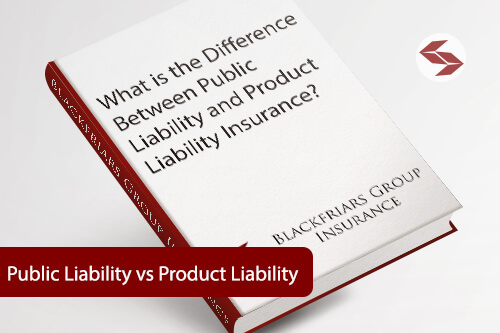Public and product liability insurance are two of the most common types of business insurance in the UK. Product and public liability insurance both cover legal defence costs and compensation related to injury or property damage claims brought by a third party against a business. The difference between these two types of coverage lies in what caused the injury or property damage in the first place.
If the injury or damage was caused by a product that was designed, made, repaired or sold by a business, the claim would fall under product liability. For example, if a shoe manufacturer uses the wrong adhesive to glue a high heel to the footbed, resulting in heels snapping off and customers falling and injuring themselves, this would be a product liability claim. The shoe manufacturer would be liable for the defect. Without product liability insurance, the manufacturer would be responsible for paying the legal and compensation costs.
If the injury or damage was caused, for instance, by an incident that happened due to negligence of the company or one of its employees then the claim would fall under public liability. For example, if a restaurant fails to fix a leaky pipe that results in a customer slipping and falling on a wet floor, this would be a public liability insurance claim situation. The business would be liable for negligence. Without public liability insurance, the business would have to cover the costs of its legal defence and any compensation payments to the injured customer.
What is product liability insurance?
Product liability insurance is a type of business insurance that protects against claims that a product that was designed, made, repaired or sold by a business has caused injury or property damage. Product liability insurance covers two primary costs associated with these types of claims: legal defence costs and compensatory damage payments to injured parties.
Businesses buy product liability insurance to protect against claims made by customers that a product was faulty and caused injury or damage.
In addition to product liability insurance, a business engaged in designing or making products might also need professional indemnity insurance. This protects against situations where professional advice, perhaps given in the designing of a product, proves to be incorrect or negligence. It can cover injury as well but often is related to a customer facing a financial loss due to negligence.
Who needs product liability insurance?
A business might need product liability insurance if they design, make, manufacture, repair, supply or sell a product.
According to the CII, companies that don’t make a product but simply sell them can be held liable for a defect. The Consumer Protection Act 1987 states that businesses can be held liable for faulty products sold for private use even if they did not manufacture them. An example of this could be a business selling a product when the manufacturer has gone out of business or cannot be identified. Or if a business puts their name on a product that is made by another party. Goods imported from outside the European Union also fall under the Consumer Protection Act 1987.
What is public liability insurance?
Public liability insurance is a type of coverage that protects against bodily injury or property damage claims made by third parties. It will cover legal defence costs as well as compensation that must be paid to an injured party. Businesses buy public liability insurance to protect against someone being injured or their property being damaged and blaming the business.
Public liability insurance does not protect against injury or illness claims made by employees, however. That would be covered by employers’ liability insurance.
Who needs public liability insurance?
A business needs public liability insurance if it interacts with or has contact with third parties. If a business has a premise that is visited by clients, customers or other members of the public then public liability insurance is important. Or if a business operates elsewhere (e.g. at client premises or public venues) but has interactions with third parties, then public liability insurance is important.
Public and product liability insurance
Public liability and product liability coverage are often combined into one policy. This is because businesses that need one frequently need the other, and they are similar in that they both cover injury or damage to third parties that is the fault of a business. They differ in the cause of the damage or injury. If it was caused by a product that a company designs, makes, repairs or sells this would fall under product liability. If the damage or injury was caused by an accident or incident resulting from the negligence of someone working for the company of a business owner, then this would fall under public liability.
The post What’s the difference between product and public liability insurance? appeared first on .


